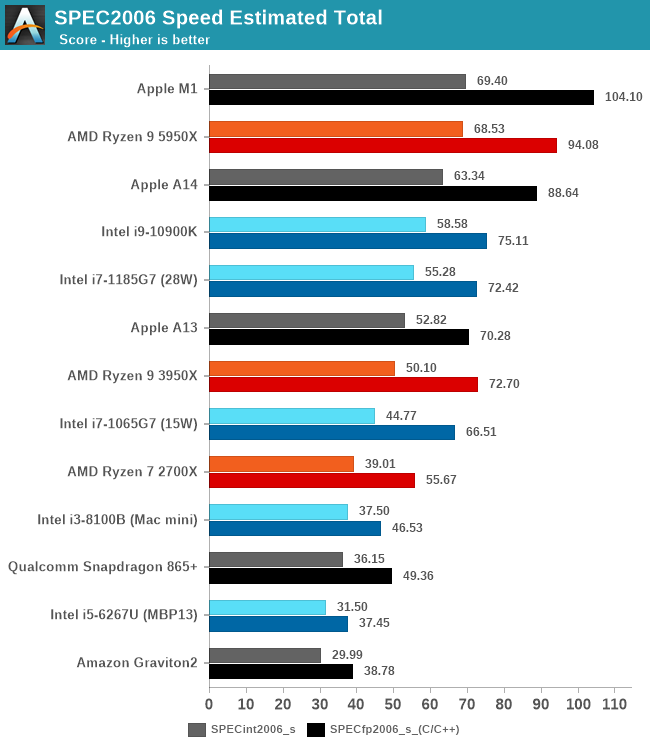You can't say "the A15 is running that benchmark just as well as X only that it is running a completely different benchmark... "
Do you know how to read those charts? Did you really think AnandTech placed scores from separate tests into one chart? Your out-of-context qualifier is referring to the
previous charts on that page measuring SPEC_base_rate-1, which thus only shows iOS to iOS benchmarks.
The chart I linked has
ALL the CPUs only tested with the C/C++ subset. The Ryzen 5950X scores
9.60 on the full suite, but in the C/C++ subset, it's 7.29, while the A15 on the C/C++ subset scores 7.28.
Those scores are 100% comparable: it is the
same test
. Let's read to the bottom of the page first before "finding problems".
Yes, but if you would rip everything out of an AMD CPU that arm can't do either would that difference still be that big?
"Arm can't do"? Arm is an ISA, not a CPU. Feature blocks are dropped & added to any CPU generation. A vague "everything that's missing" isn't much of a leg to stand on.
Or is your insinuation x86 as an ISA is handicapping AMD's peak performance? In that vein, AMD can ship more Arm CPUs: who's stopping them? AMD already has an ARM license (e.g., Opteron A1100) and
AMD can ship Jim Keller's Arm chip design.
While AMD and Intel are still struggling to pull up their IPC, even half-a-decade-old Arm server CPUs have solid 1T performance based on their
significantly higher IPC, even with quite moderate clocks (2.4 GHz to 3.3 GHz). Turns out, plenty of CPU workloads are not at all intrinsically tied to AMD's cores, Intel's cores, nor the x86 ISA.
//
More benchmarks, here from the Ampere Altra Q80-33 (80x cores; 3.3 GHz). That Ampere CPU uses a server-centric Cortex-A76 core called the Neoverse-N1; the A76 was released in 2018. The updated Neoverse-V1 has a server-centric Cortex-X1 core, which is still a 2020 core (Cortex-X3-based SoCs will release in 3-4 months).




